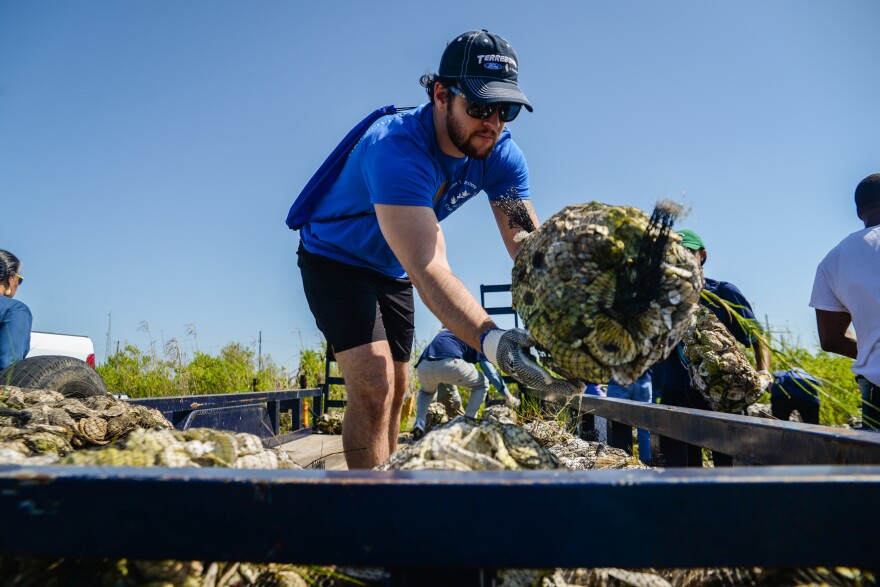Bags of oyster shells once slurped on at New Orleans restaurants clinked against each other as volunteers tossed them onto trucks, then boats, on Friday, set to return to the water to help save an eroding Indian mound of Plaquemines Parish’s west bank.
Organized by the Coalition to Restore Coastal Louisiana, or CRCL, volunteers chucked the recycled shells into the choppy waters of Adams Bay to fortify the 400-foot-long reef built around the mound’s shoreline last July.

Once a formidable hill, the mound constructed by the Atakapas-Ishak/Chawasha tribe, like much of Louisiana’s coast, has sunk over the last century, and now sits just a few feet above sea level. Brackish waves eat away at its edges, shrinking the footprint. Saltwater intrusion killed its namesake lemon tree that now rots on the island.
“The hill is gone,” said Jonathan Phillips, a tribal citizen. “It’s a flat surface now.”

But the Lemon Tree mound still serves as an important reminder of the tribe’s culture and history as skilled mound builders. Phillips and other residents of the Grand Bayou Indian Village, home to the tribe, hope the oyster reef will keep the mound alive.
That hope isn’t misplaced. CRCL Restoration Program Manager Kellyn LaCour-Conant said parts of the mound behind the thickest parts of the reef were protected from erosion during Hurricane Ida last August. Areas where volunteers couldn’t reach weren’t so lucky.

“Where we didn’t have shell, from the last storm it kind of got beat up,” Phillips said.
Oak trees on their last leg toppled into the water, and vegetation across the mound suffered. But that’s why volunteers returned on Earth Day to add more shells to the weaker spots in the reef.

And as oyster larvae land on the reef, it will become part of the natural landscape, growing in height and width on its own, even helping to nourish nearby oyster leases.
“Research has shown us that oyster reefs … can grow to outpace sea level rise,” LaCour-Conant said. “(And) they can grow to offset some effects of land loss that we see from subsidence.”

Phillips said they’re already seeing baby oysters latch onto the reef and grow.
While oyster reefs don’t create new land and can’t stop all of Louisiana’s coast from slipping beneath the sea, LaCour-Conant noted that every little bit helps. The Lemon Tree reef site in particular — made with at least 200 tons of oyster shell — will likely exist for generations, serving as a marker even if the mound behind it eventually sinks.
“The memories of the land and the water at that site will not wash away,” she said. “That power of community and the legacy and the history — that can't be washed away, even if the land erodes.”



